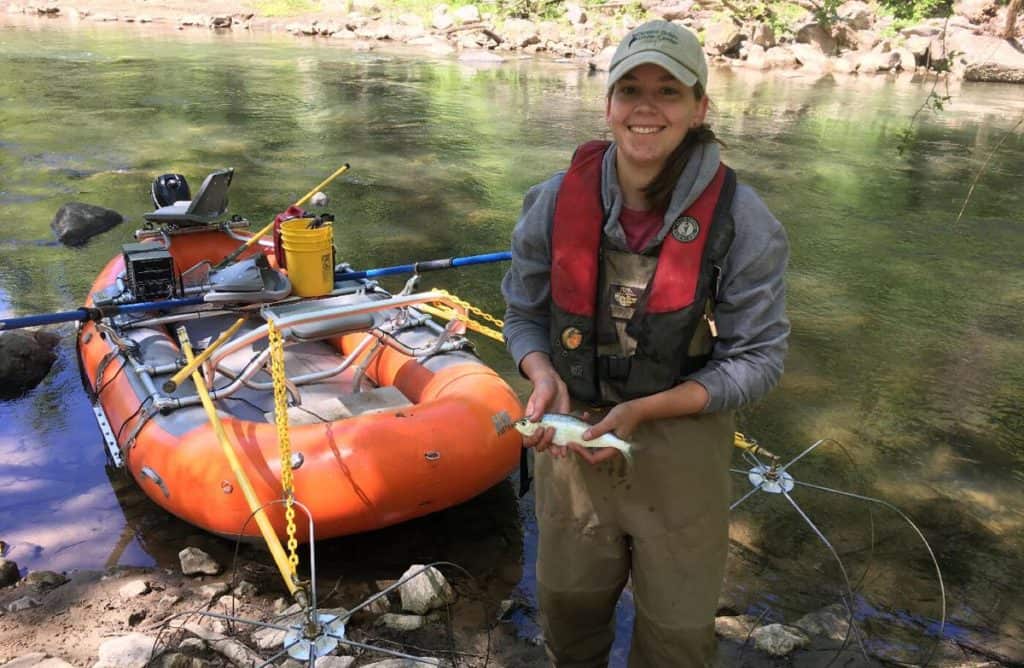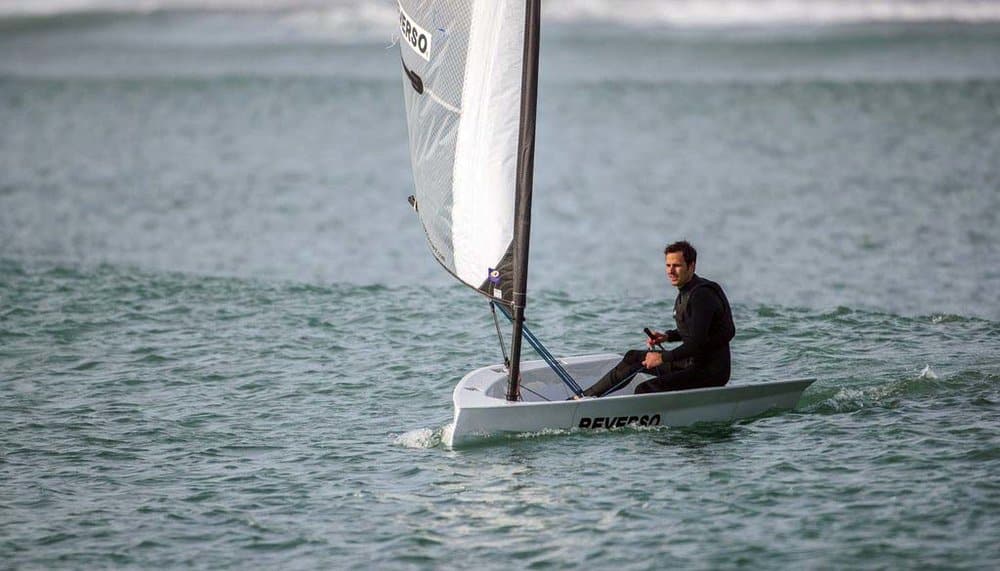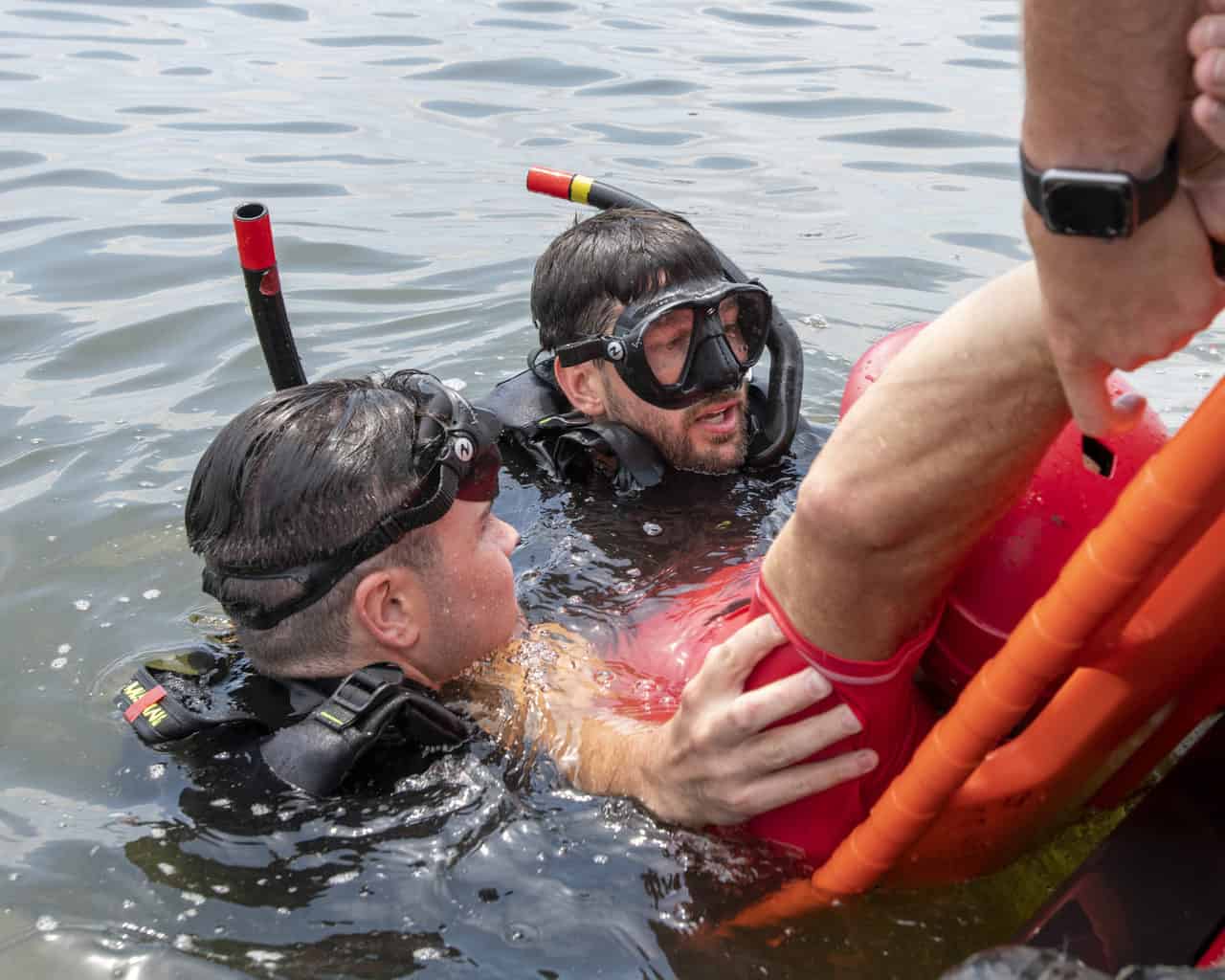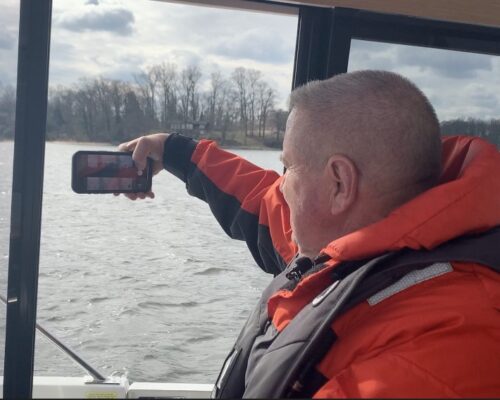By Timothy B. Wheeler, Bay Journal News Service
This spring, William Harbold and his team of biologists with the Maryland Department of Natural Resources (DNR) made a pair of thrilling discoveries in the Patapsco River southwest of Baltimore.
In late March, they retrieved an alewife, a thin silvery fish with a gray-green back and big eyes, near a railroad bridge at Ilchester Road in Howard County. Then in mid-May, they found a nearly identical-looking blueback herring nearf Ellicott City.
Those little fish, collectively known as river herring, may not seem much to get excited about. But they were the first physical specimens of their species to be found that far up the Patapsco in more than a century. From 1907 until three years ago, Bloede Dam had straddled the river 10 miles upstream from Baltimore, preventing migratory fish from getting farther upriver to spawn. American eels also were blocked.
“So that,” Harbold said, “was pretty cool.”
Physical structures like dams that hinder or block the movement of migratory fish to their historic spawning grounds are a major factor in the decline of river herring, American shad and other anadromous fish species, which spend most of their lives in saltwater but return to reproduce in fresh water. Restoring access to spawning habitat for migratory fish and eels is a goal of the 2014 Chesapeake Bay Watershed Agreement.
Bloede Dam, built in 1906–07 by a private company to supply electricity to Catonsville and Ellicott City, ceased generating power in the 1930s. A fish ladder installed at the dam later to help fish and eels get by proved ineffective. But its location in heavily used Patapsco Valley State Park made it attractive to swimmers — and dangerously so, with nine drowning deaths reported there since the 1980s, according to DNR, which became the dam’s owner.
Its removal was the linchpin in a long-term plan to restore 65 miles of fish and eel habitat in the Patapsco. Two smaller dams upriver had been taken out earlier—the Union Dam in 2010 and Simkins Dam in 2011.
So, in September 2018, a contractor breached Bloede Dam with an explosive charge. Over the next year, heavy equipment broke up and removed the rest of the concrete and steel structure that had at one time stood 34 feet high and 200 feet long. After spending $17 million in mostly federal funds to un-build the dam, would the fish and eels come upriver?
Chuck Stence, who runs the DNR’s anadromous fish program.
The DNR team began checking for new arrivals upriver after the dam was removed. They used electrofishing gear, which stuns the fish long enough that they float to the surface, where they can be identified and counted before they recover and swim off.
“We got proof [almost immediately] that at least fish could pass upstream,” Harbold said. In 2019, even before all of the demolition work was finished, DNR biologists caught two other types of migratory fish—gizzard shad and white perch—at the base of Daniels Dam, about eight miles upriver of the Bloede site.
But for the first two years after Bloede’s removal, the DNR team did not spot river herring at any of the three sites they sampled. And this spring, the DNR team found only a single male alewife and blueback herring, without finding any females with which they could spawn.
However, biologists with the Smithsonian Environmental Research Center (SERC) in Edgewater, MD, have picked up indirect evidence that river herring are starting to move upstream, though evidence of spawning is still lacking.
To check for spawning activity, biologists have been deploying nets in the water to catch fish eggs and larvae drifting downriver. They didn’t find any for river herring in 2019, Ogburn said, and data from 2020 and 2021 are still being analyzed. Matt Ogburn, an ecologist at SERC, says the potential is there:
“A lot of us feel like there’s viable spawning habitat up there,” he said of the Patapsco above Bloede. “The question is how much actual spawning is going on.”
You can read this article in full at bayjournal.com.




